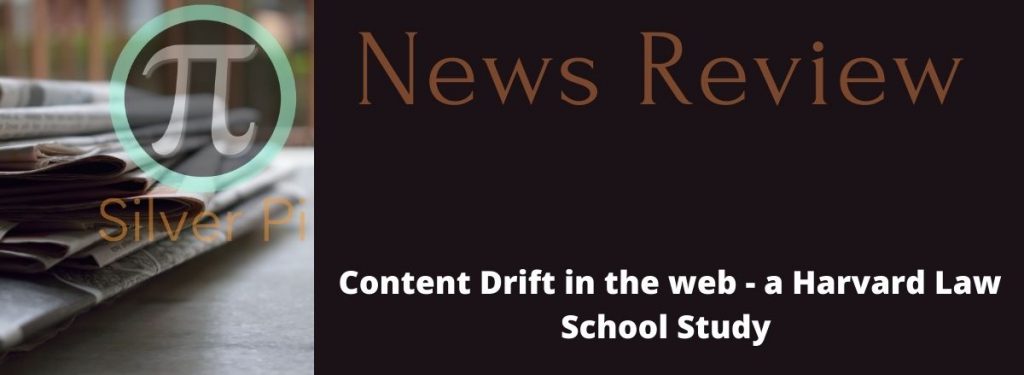A team of researchers at Harvard Law School undertook a research project to gain insight into the extent of content drift in the web and their report does affirm some of the (expected) issues on this.

Hyperlinks is probably the most important tool that defines and enables the information on the web today. It helps us to organize content in the most natural way. It presents the core information you would need, while hiding away the details, helping to keep the focus and avoiding the clutter. At the same time, it also makes the details available with the proverbial ‘one click’.
But the most important aspect of information organized using hyperlinks is that it is dynamic. For example, the encyclopedia, once the bible for facts, had its content become obsolete the moment it was printed. But now Wikipedia can give us the latest facts about anything in the world – updated literally evey minute. But this super dynamic (ephermeral) nature of web also poses a key risk. The information the hyperlinks point to could no longer become available (‘broken links’) or even worse, become something different. This could seriously impact the quality and utility of the referring pages. A team of researchers at Harvard Law School undertook a research project to gain insight into this phenomena and their report does affirm some of the (expected) issues on this.
The team conducted their research on the New York Times articles, starting with the launch of the Times website in 1996 up through mid-2019. They chose the Times as it is “in particular a well-resourced standard-bearer for digital journalism, with a robust institutional archiving structure”. Still the team could find substantial ‘link rot’ in the content, ranging from unavailable content to changed content. A detailed account of the reserach methodology and the results are available in their report (link below). The team also looks at potential mitigation measures, but there does not seem to be a silver bullet for this (as yet).
It is interesting to think about the parallels for this in learning and education in general. The idea of focusing on knowing how to get to the content (rather than knowing the content itself) does expose us to the risks of the ‘tools’ invoved. But the benefits it brings would mean that we would continue to embrace the former (‘google’) approach. It is time to think of the potential mitigation measures – in real (rather than metaphorical) ways.

